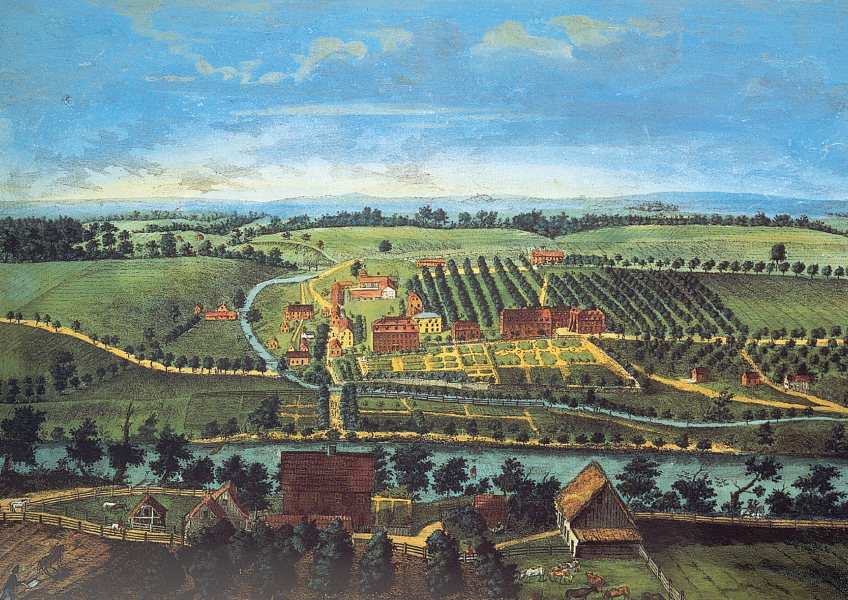
Bethlehem, Pennsylvania
This view of Bethlehem, Pennsylvania, in 1757 dramatizes the profound transformation of the natural landscape humans wrought in the eighteenth century by highly motivated human labor. Founded by Moravian immigrants in 1740, in less than twenty years Bethlehem featured precisely laid-out orchards and fields in place of forests and glades. By carefully penning their livestock (lower center right) and fencing their fields (lower left), farmers safeguarded their livelihoods from the risks and disorders of untamed nature. Individual farmsteads (lower center) and brick town buildings (upper center) integrated the bounty of the land with community life. Few eighteenth-century communities were as orderly as Bethlehem, but many effected a comparable transformation of the environment. Print Collection, Miriam and Ira D. Wallack Division of Art, Prints, and Photographs, The New York Public Library. Astor, Lenox, and Tilden Foundations.<
> VISUAL ACTIVITY
READING THE IMAGE: What does this painting indicate about the colonists’ priorities?
CONNECTIONS: Why might Pennsylvanians have been so concerned about maintaining order?